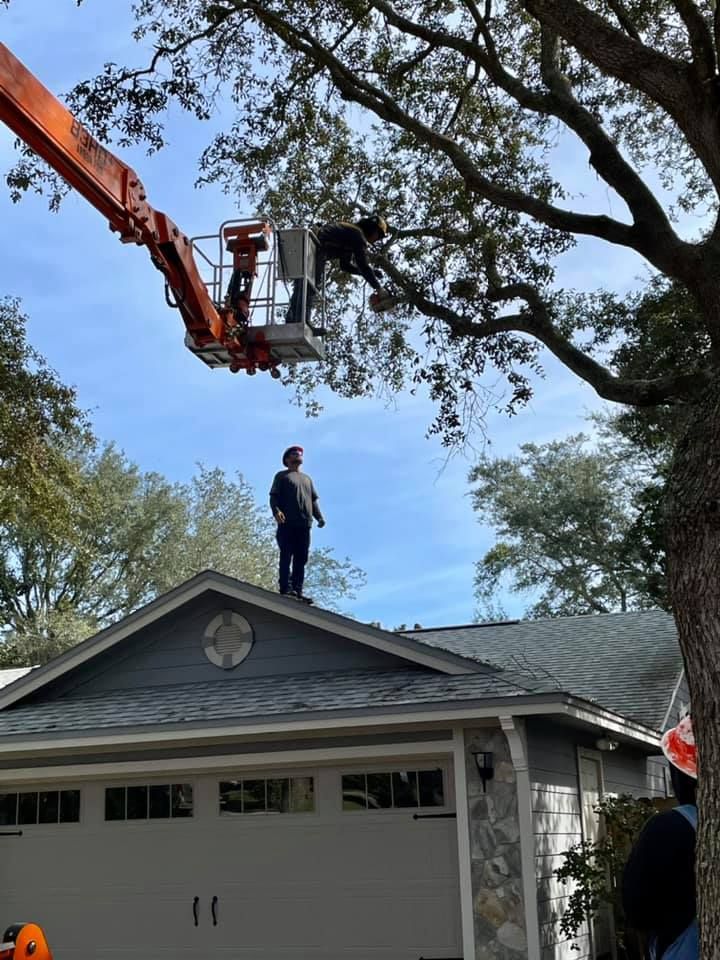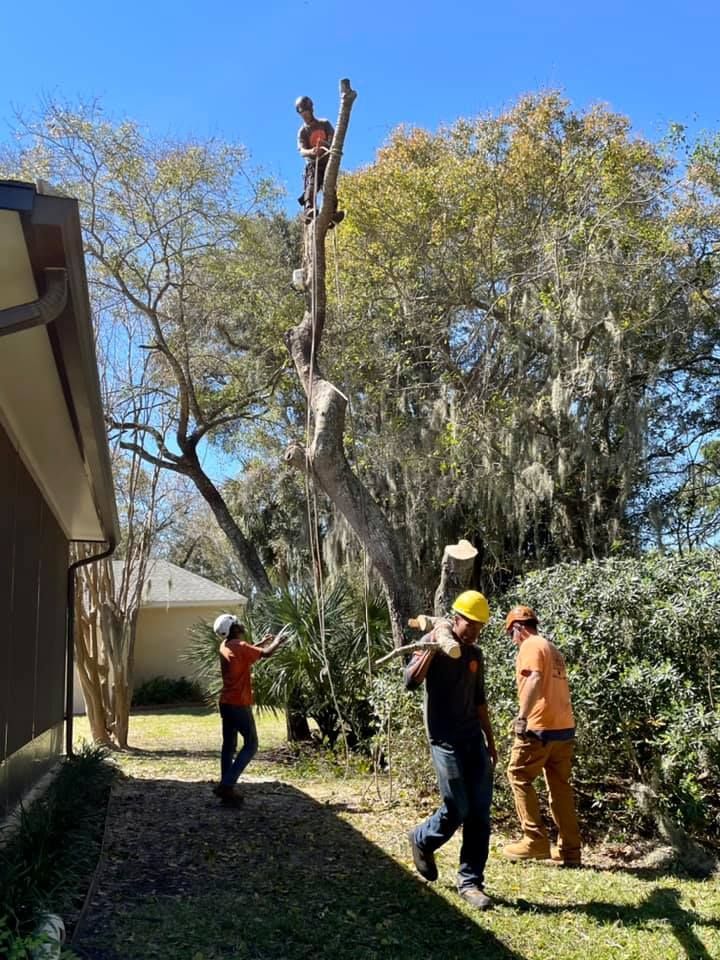Specialty Tree Services in Fernandina Beach
At The Tree Surgeons, we provide comprehensive tree services to the residents and businesses of Fernandina Beach, FL, Northeast Florida, Southeast Georgia, and surrounding areas. With over 10 years of experience, our locally owned company is dedicated to maintaining the health and beauty of your trees.
Tree Trimming and Pruning
Issues That Can Arise from Not Getting Your Trees Trimmed or Pruned
Neglecting to trim or prune your trees can lead to several problems:
- Overgrown branches that pose safety hazards
- Increased risk of disease and pest infestations
- Reduced sunlight and airflow, affecting tree health
- Potential damage to property during storms
Different Types of Tree Trimming and Pruning We Do
Our tree trimming and pruning services include:
- Crown Thinning: Removing excess branches to improve light penetration and air circulation.
- Deadwood Removal: Eliminating dead or dying branches to prevent decay and enhance tree appearance.
- Crown Reduction: Reducing the overall size of the tree to manage growth and prevent interference with structures.
- Formative Pruning: Shaping young trees to promote strong, healthy growth.
Tree Removal
The Risks That Not Having Your Tree Professionally Removed Can Cause
Attempting to remove a tree without professional help can result in:
- Injury to yourself or others
- Damage to nearby structures and property
- Improper removal techniques that can harm the environment
- Legal issues if the tree is protected or located in a sensitive area
Tree Removal Process
Our tree removal process is safe and efficient:
1
Assessment: Evaluating the tree's condition and determining the best removal method.
2
Preparation: Securing the area and planning the removal to minimize risks.
3
Removal: Using specialized equipment to safely cut down and remove the tree.
4
Cleanup: Clearing debris and ensuring the site is left clean and tidy.
Stump Removal
Benefits of Stump Removal
Removing stumps offers several advantages:
- Improved Aesthetics: Enhances the appearance of your landscape.
- Safety: Eliminates tripping hazards and prevents accidents.
- Pest Prevention: Reduces the risk of pests and diseases that can inhabit old stumps.
- Space Utilization: Frees up space for new plantings or landscaping projects.
Residential and Commercial Tree Services
Our tree services cater to both residential and commercial properties. Whether you need tree care for your home or business, The Tree Surgeons are equipped to handle projects of any size. We offer personalized solutions to meet your specific needs and ensure your trees are healthy and well-maintained.
Call for Tree Services!
Elevate your landscape with our specialty tree services. Call The Tree Surgeons at 904-206-1237 for expert tree care in Fernandina Beach and beyond. Let us help you create a beautiful and safe outdoor space!





